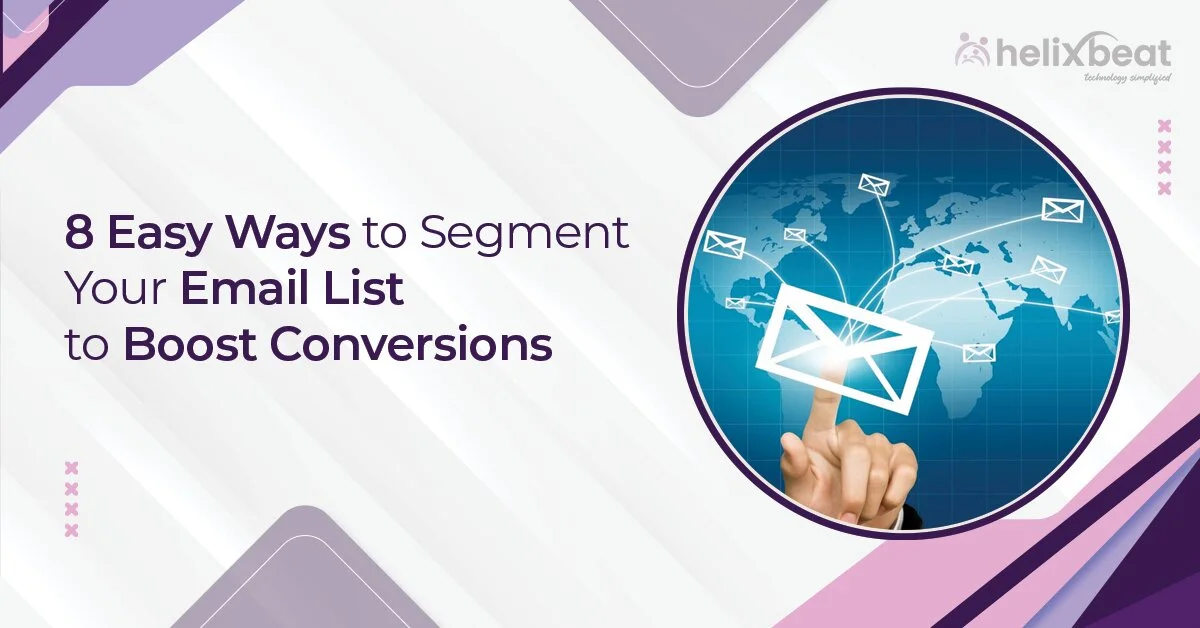Let’s face it—email marketing is still king in driving conversions. In fact, businesses can expect an average return of $42 for every dollar spent. But here’s the catch: just hitting “send” isn’t going to cut it. If you’re not targeting the right audience with the right message, you’re missing out. That’s where list segmentation comes in. Imagine this: instead of sending generic emails to your entire list, you’re able to write emails specifically to different groups of people based on their needs, behaviors, and preferences.
The result? A 760% increase in revenue for businesses that use segmentation effectively. Now, that’s powerful. In this post, we’ll find out eight simple ways how to do email marketing by segment list to boost conversation.
Table of Contents
What is email list segmentation?
First, let’s cover the basics. Segmenting your mailing list means splitting contacts into different categories based on similar characteristics. These can be behavioral patterns, demographics, geographics, or other valuable characteristics for your brand and subscribers.
This way, instead of batch-and-blasting everyone, segmentation offers a way to personalize the email content and sending frequency for each part of your target audience.
A simple example of list segmentation can be seen in companies that cater to both B2B and B2C markets. Sending B2B email campaigns to individual consumers would be a waste of resources, so it’s important to separate these two groups into different lists.
List segmentation should be a regular part of your email list maintenance. Once you’ve divided your subscribers, you can use email marketing tools to send specific newsletters, product updates, and other relevant emails to each group. This helps make sure your messages match the interests and needs of the right audience, leading to better engagement and higher conversion rates
Why is list segmentation in email marketing important?
Email list segmentation is a powerful marketing strategy that is often overlooked. If you’ve been putting off using this approach in your past campaigns, now is the time to make it a priority. Let’s look at some key statistics that highlight the benefits of segmenting your email list.
Lyris found that 39% of marketers who segment their email lists experience higher open rates, 28% see lower unsubscribe rates, and 24% enjoy better deliverability and increased revenue.
Let’s learn how to do email marketing by segmentation in eight ways-.
How to do email marketing by list segmenting?
1. Dig into demographics
The first email marketing process scrutinizes the demographics of customers. The level of complexity in list segmentation can vary significantly. For those just starting out, it’s important not to overcomplicate your strategy. Begin with the basics by using the demographic information you’ve gathered during the opt-in process, such as age, gender, location, or job title.
While this may seem like basic data, knowing the age range of your audience can make a big impact on your email conversions. For instance, you might need to send different messaging, content, or product recommendations to Gen Z subscribers compared to Baby Boomers.
If you’ve only collected names and email addresses during sign-up, don’t worry—there are still plenty of ways to segment your list effectively.
2. Behavioral Segmentation: Speak to Their Actions
The next email marketing process is analyzing customer purchase behaviour. Your subscribers’ actions are a goldmine of insights. Behavioral segmentation involves categorizing subscribers based on their interactions with your emails, website, or social media.
What to look for:
- Email Engagement: Who opens your emails? Who clicks on your links? This data tells you who’s actively engaging with your content and who’s losing interest.
- Browsing Behavior: Did they browse a certain category of products? Are they spending more time on your blog posts or viewing your landing pages? Tracking their browsing behavior can tell you exactly where their interest lies.
- Purchase Behavior: Who buys from you regularly? Who is likely to make repeat purchases? Segmenting based on purchasing history helps you send tailored offers that encourage repeat purchases or increase average order value.
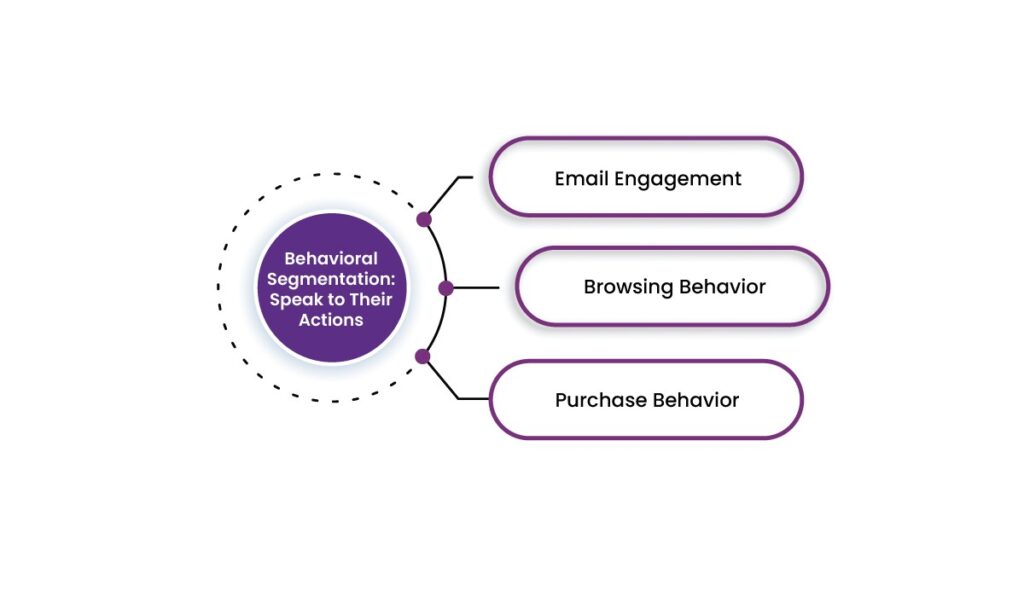
This can determine if you’ll send your subscriber a nurturing drip campaign or an abandoned cart email. In this case, you can send them an email offering a discount or a free trial to help persuade them. You can also integrate your email-sending workflow with a customer relationship management and email marketing tools to send automated messages based on where your customer is on the path to purchase.
3. Purchase History: Get Personal with Their Buying Patterns
One of the most effective email marketing tools is to segment your email list by purchase history. Your subscribers’ buying habits reveal a lot about their preferences and what they value most in your products or services. You can use this data to create more relevant, timely, and compelling email campaigns.
Segmentation Strategies:
- Frequent Buyers: For customers who make regular purchases, consider offering loyalty rewards, exclusive offers, or sneak peeks of new products.
- One-Time Buyers: Send these customers a thank-you note, share tips on how to get the most out of their purchase, and offer incentives to return.
- Abandoned Carts: Customers who add products to their cart but leave without purchasing should be sent reminder emails. Offering an additional incentive like a discount or free shipping could help turn that abandoned cart into a sale.

Why is this effective?
Personalizing your emails based on previous purchases is a crucial email marketing process.it is an email marketing tool to know customers better. Therefore, you understand their needs and can anticipate future ones. This kind of tailored communication increases the chances of repeat business.
4. Frequency of Purchase: Nurture Loyal Customers
Segmenting by the frequency of purchase is a great way to identify your most loyal customers. These individuals clearly love your product or service, and you should make the most of it. If a customer buys from you on a regular basis, you know they’re highly engaged with your brand.
What to do with this segment:
- Reward Loyalty: Offer these customers exclusive discounts, early access to sales, or VIP-only content to keep them coming back.
- Cross-Sell or Upsell: Loyal customers might be interested in complementary products or upgraded versions of the items they already love. Consider sending targeted email campaigns with personalized recommendations based on their purchasing history.
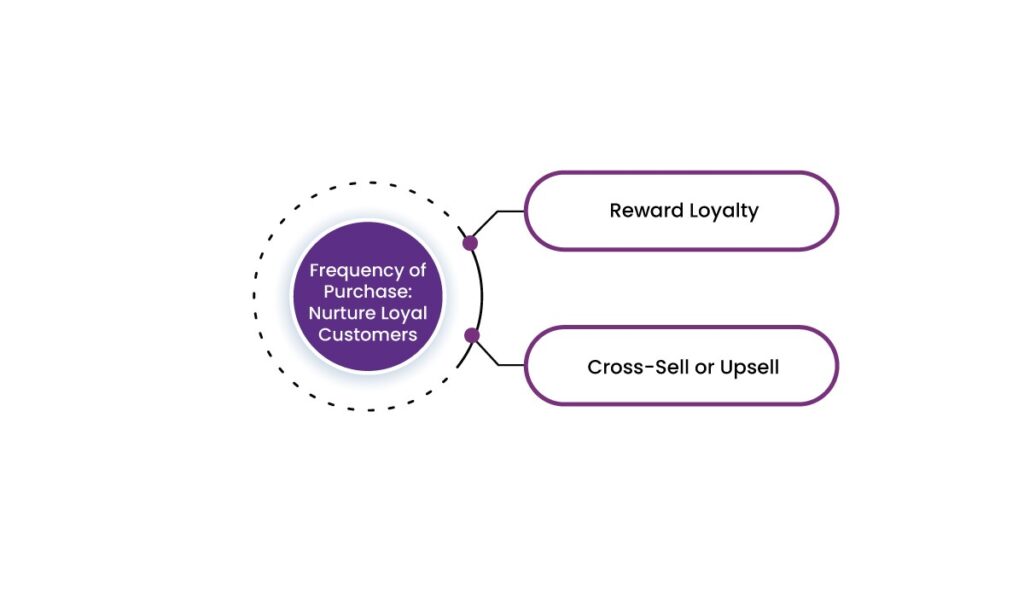
Why is this effective?
Loyal customers are the foundation of any successful business. By acknowledging and rewarding their loyalty, you not only increase conversions but also turn these customers into brand advocates who will share their positive experiences with others.
5. Amount of Purchase: Tailor Your Offers Based on Spending
Segmenting your list based on the amount customers spend is a great way to create highly targeted campaigns. Some customers are budget-conscious and prefer lower-cost options, while others are willing to splurge on premium products.
How to Segment:
- High-Spending Customers: These individuals may be interested in high-ticket items or luxury versions of your products. Send them emails showcasing premium offers or new arrivals.
- Low-Spending Customers: Send these customers promotions, discounts, or bundles to encourage them to spend a bit more.
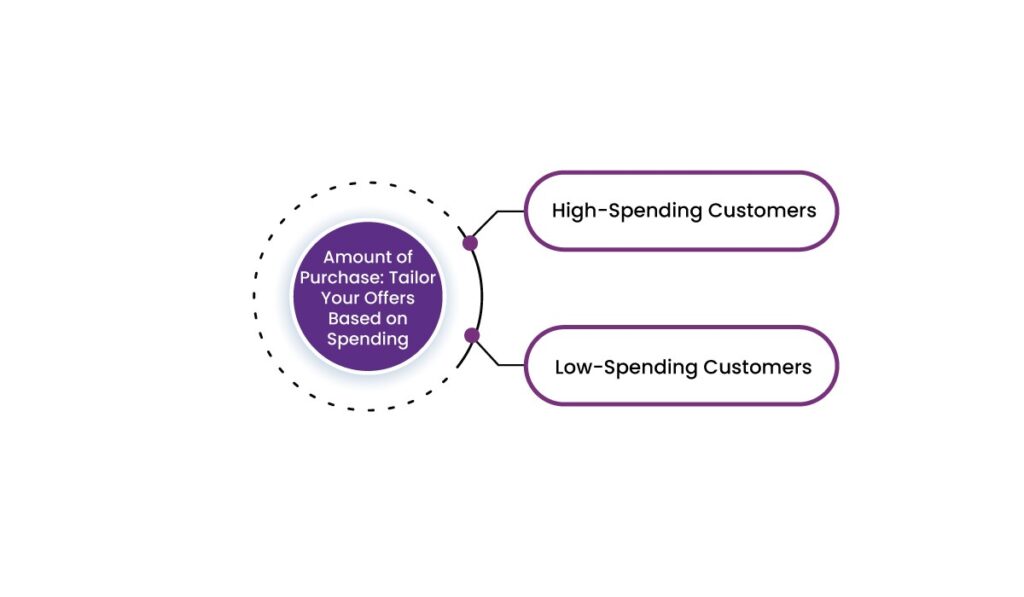
Why is this effective?
When you segment by spend, you can personalize your offers in a way that makes customers feel like they’re getting something tailored to their budget. This makes the message feel more relevant and increases the chances of conversion.
6. Opt-In Source: Know Where They Came From
When new subscribers join your email list, they usually do so through specific channels like your website, social media, or paid ads. By segmenting based on their opt-in source, you can create more personalized experiences for each group.
What to Look For:
- Website Opt-Ins: These subscribers may be more familiar with your brand and could be interested in getting information directly from your site.
- Social Media Opt-Ins: Social media followers might appreciate more casual, visually engaging content.
- Paid Ad Opt-Ins: People who sign up after clicking a paid ad may be looking for something specific. You can follow up with content that aligns with the ad they clicked on.
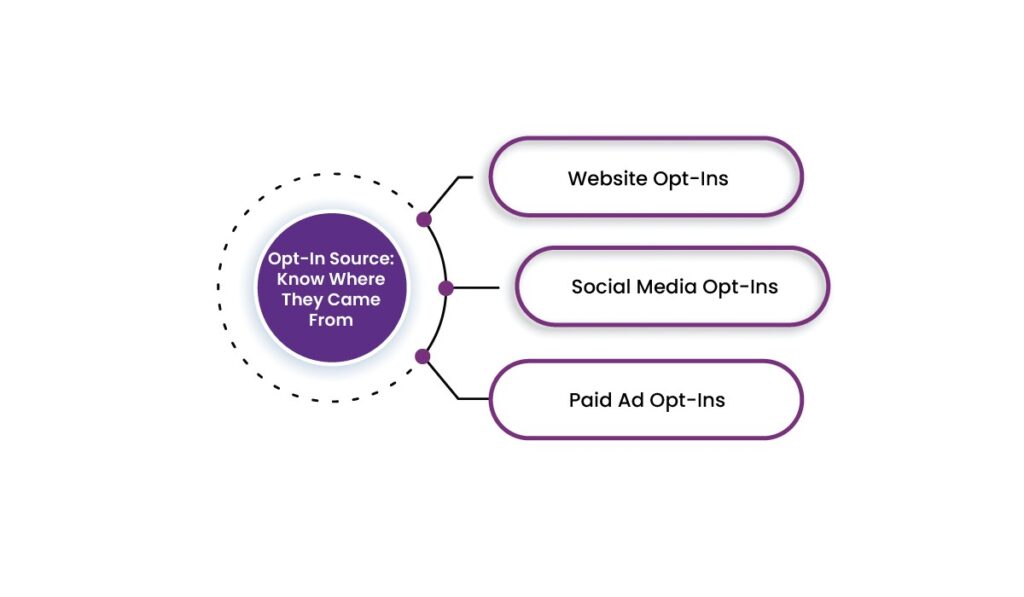
Why is this effective?
A vital email marketing process is knowing where your subscribers came from. it helps you customize your follow-up emails to fit their expectations and experiences, which can improve conversion rates.
7. Abandoned Carts: Recover Lost Sales
One of the most powerful email segments is the abandoned cart list. This group of subscribers showed interest in a product by adding it to their cart but didn’t complete the purchase. You can target these individuals with personalized email reminders to encourage them to finish their purchase.
What to Do:
- Send a Reminder: A friendly email reminding them about their abandoned cart, along with an image of the product, can jog their memory and encourage them to return to your site.
- Offer Incentives: Providing a small discount, free shipping, or another incentive can sweeten the deal and persuade them to finalize the transaction.
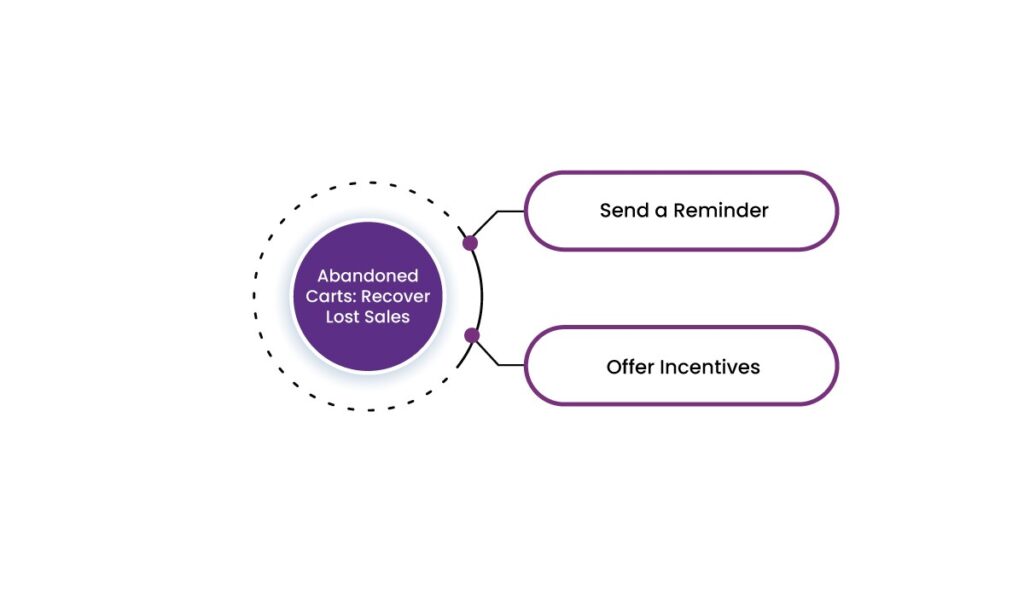
Why is this effective?
Abandoned cart emails are a proven email marketing process, with some studies showing that they can recover up to 10-30% of abandoned sales. By focusing on this segment, you’re turning lost opportunities into revenue.
8. Email Engagement: Keep the Conversation Going
Not all subscribers will engage with your emails in the same way. Some will open and click every time, while others may never engage with your content. Segmenting based on email engagement allows you to send targeted emails that either nurture inactive subscribers or reward your most engaged fans.
How to Segment by Engagement:
- Highly Engaged Subscribers: Send these customers exclusive offers, sneak peeks, or VIP-only content. They’re already invested, so make them feel valued.
- Inactive Subscribers: For those who haven’t opened your emails in a while, try re-engaging them with win-back campaigns or special offers, and sometimes with polls, surveys, and quizzes designed to capture their attention.

Why is this effective?
Engagement-based segmentation in email marketing helps you maximize your efforts. It ensures you’re not wasting resources on subscribers who aren’t interested while focusing more on those who are.
End notes,
Don’t forget that segmentation should be an ongoing process. Keep refining your strategy based on the data you gather, and always be looking for new ways to connect with your audience. By doing so, you’ll build stronger relationships with your subscribers and achieve greater success in your email marketing efforts.
Helixbeat has years of experience in digital marketing and specializes in email marketing that works for each client’s specific audience. By using smart segmentation techniques, Helixbeat helps businesses make their email campaigns more effective and engaging. Their know-how ensures that every email delivers value, helping companies connect better with their customers and increase sales.
Stay tuned with Helixbeat for more tips on how to make your email marketing more impactful.
Frequently asked question
- What makes Helixbeat’s email marketing strategies stand out from other providers?
Helixbeat’s email marketing strategies are tailored to each client’s unique audience. They specialize in smart segmentation techniques, ensuring that every email sent is highly targeted and relevant. Their approach focuses on personalized content, detailed analytics, and continuous optimization to ensure maximum engagement and conversions.
- How does Helixbeat use segmentation to personalize email campaigns for specific audiences?
Helixbeat segments email lists based on various criteria such as demographics, purchase behavior, browsing activity, and email engagement. This allows them to craft highly personalized campaigns that speak directly to each subscriber’s needs, increasing open rates, clicks, and conversions.
- Can Helixbeat help businesses recover lost sales through abandoned cart emails?
Yes, Helixbeat specializes in creating targeted abandoned cart emails that remind customers about their incomplete purchases. They can incorporate personalized incentives like discounts or free shipping, which help recover lost sales and improve conversion rates.
- What kind of tools does Helixbeat use to track and analyze email campaign performance?
Helixbeat utilizes advanced email marketing platforms and analytics tools to track key metrics like open rates, click-through rates, conversion rates, and unsubscribe rates. This data helps them assess the effectiveness of each campaign and optimize future ones for better performance.
- How can Helixbeat assist with creating re-engagement campaigns for inactive subscribers?
Helixbeat helps businesses target inactive subscribers with re-engagement campaigns. These can include personalized messages, special offers, or even surveys to understand why the subscriber became inactive. By offering compelling incentives or relevant content, Helixbeat works to bring these subscribers back into the fold.
- What kind of support does Helixbeat offer to ensure my email marketing strategy aligns with my business goals?
Helixbeat provides dedicated support to understand your business goals and tailor email marketing strategies accordingly. They offer consultation, strategy development, and ongoing campaign optimization to ensure that every email sent is aligned with your business objectives and maximizes ROI.
- How does Helixbeat measure the effectiveness of email campaigns in terms of conversion rates?
Helixbeat tracks conversion rates by monitoring key performance indicators (KPIs) such as click-through rates, sales, and other goal completions tied to email campaigns. They use A/B testing, segmentation data, and detailed reporting to measure and refine campaigns for improved conversions.
- Can Helixbeat help me optimize my email content to improve open and click-through rates?
Yes, Helixbeat specializes in optimizing email content to improve both open rates and click-through rates. They focus on crafting compelling subject lines, engaging copy, and strong calls to action that resonate with your audience, as well as ensuring the emails are visually appealing and mobile-friendly.



